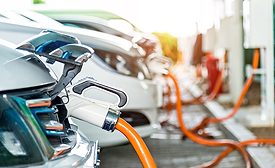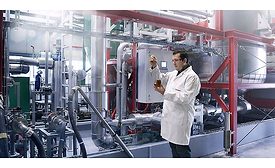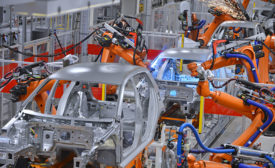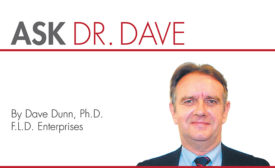Featured on Home Page
Although binder adhesives are a small component of the lithium-ion batteries that power electric vehicles, they play a critical role in ensuring performance and efficiency while providing improved battery kinetics.
Read More
Strategic Solutions
Sustainable Adhesives in Construction and Packaging
Though sustainability can be difficult to define, many types of adhesives contribute to more sustainable construction and packaging products.
November 8, 2021
Sustainable Sausage Packaging for Adhesives and Sealants
Though the construction industry has been slow to adopt the use of adhesives and sealants packaged in sausages, advantages for sustainability and efficiency abound.
November 5, 2021
Advancing Adhesives
Recycling Plastic Waste into Custom-Made Polyols
The chemical recycling of polyurethane (PU) and polyethylene terephthalate (PET) from waste materials is evolving into a viable alternative to mechanical recycling.
November 3, 2021
Addressing Sustainability in Disposable Hygiene Products
Adhesive manufacturers can partner with players all along the supply chain to reduce the environmental impact of single-use disposable hygiene products.
November 1, 2021
A Joined-Up Approach to Adhesives and Sustainability
Tape and adhesive manufacturers are working to enhance the sustainability of their products, but collaboration throughout the supply chain and beyond is also critical.
October 28, 2021
Market Trends
Strong Growth Projected for Structural Adhesives
The global structural adhesives market is projected to reach $27.9 billion and exhibit a considerable CAGR from 2021-2030.
October 26, 2021
From the Editor
Knowledge and Networking at Adhesive Industry Events
Two in-person events this month will provide attendees with various opportunities to expand their knowledge and interact with peers.
October 22, 2021
ASSEMBLY in Action
Myriad adhesives and related technologies will be showcased at The ASSEMBLY Show.
October 21, 2021
Ask Dr. Dave
Vibration- and Shock-Resistant Adhesives
Which adhesives can resist serious vibration and shocks?
October 20, 2021
Keep the info flowing with our eNewsletters!
Get the latest industry updates tailored your way.
JOIN TODAY!Copyright ©2024. All Rights Reserved BNP Media.
Design, CMS, Hosting & Web Development :: ePublishing








.jpg?height=168&t=1634732409&width=275)




